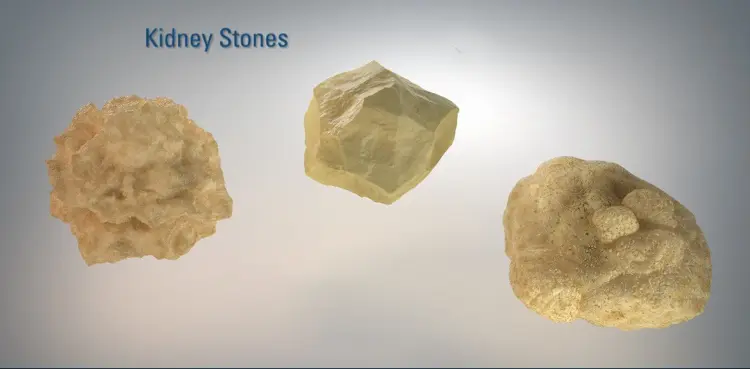Overview
Kidney Stones are formed by salts and minerals in the urine that stick together to form small pebbles. Usually, these formations are painless. However, as they leave the kidney and travel through the ureter, they can cause severe pain. Most stones will be passed through the urine in a few days. From time to time, however, they can become lodged in the ureter and require surgical assistance. There are four major types of kidney stones, named after their primary mineral components.
- Calcium stones—Calcium stones make up the vast majority of kidney stones and are caused by excess calcium or oxalate in the urine. Diets high in calcium or oxalate and hereditary conditions are often to blame for the development of calcium stones.
- Struvite stones—These stones are composed primarily of ammonium and magnesium phosphate and form as a response to an infection. These stones can grow very large, very quickly.
- Uric acid stones—A rarer form of stone, these are composed when acid levels in the urine are higher than normal for longer periods of time. Certain genetic factors predispose individuals to this type of stone, as well as people who are dehydrated, have a high-protein diet and those with gout.
- Cystine stones—These stones represent only a small percentage of kidney stones. They form in people with a hereditary disorder that causes the kidneys to excrete excessive amounts of certain amino acids (cystinuria).

Photo Credit: Boston Scientific
Risk factors for developing kidney stones include: personal history, dehydration, certain diets, obesity or digestive diseases and surgery.
If you have developed kidney stones of any type and are having trouble passing them naturally, there are more options for treatment.
Treatment
Kidney stone treatments are largely based on the size and location of the kidney stone and each patient is assessed individually to see which option is best. Three varieties of kidney stone treatment are currently used.
1. Lithotripsy / Shock Wave Lithotripsy – Sometimes just called “lithotripsy,” this is an outpatient procedure which requires general anesthesia. Once asleep, X-rays are used to align the machine with the kidney stone. Next shocks are delivered to the kidney stone causing fragmentation.

Video: Boston Scientific: SWL
2. Ureteroscopy – This procedure also requires general anesthesia. Once asleep small cameras are driven into the urethra, bladder and then ureter (drainage tube of the kidney). When a stone is encountered, it is either basketed and removed or fragmented using a laser. This procedure typically requires a temporary tube in the ureter called a stent.
Click the image below to view and download an informational PDF about this procedure.

Video: Boston Scientific – URS
3. Percutaneous Nephrolithotomy (PCNL) – A small incision is made in the back and small cameras are placed from this incision into the kidney and a combination of ultrasonic devices and baskets are used to break and remove the stone. This is reserved for larger kidney stones.
Video: Boston Scientific – PCNL
